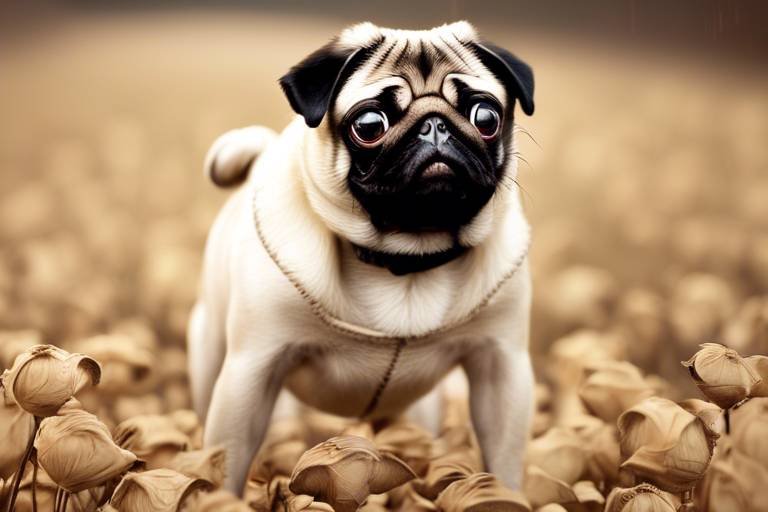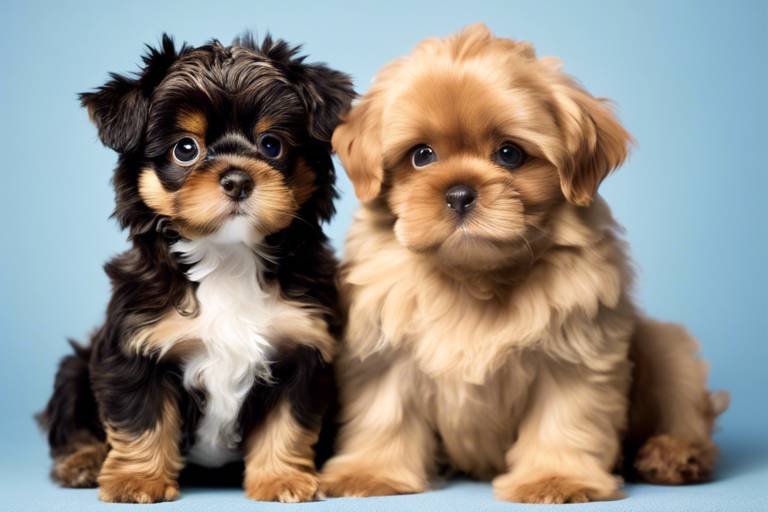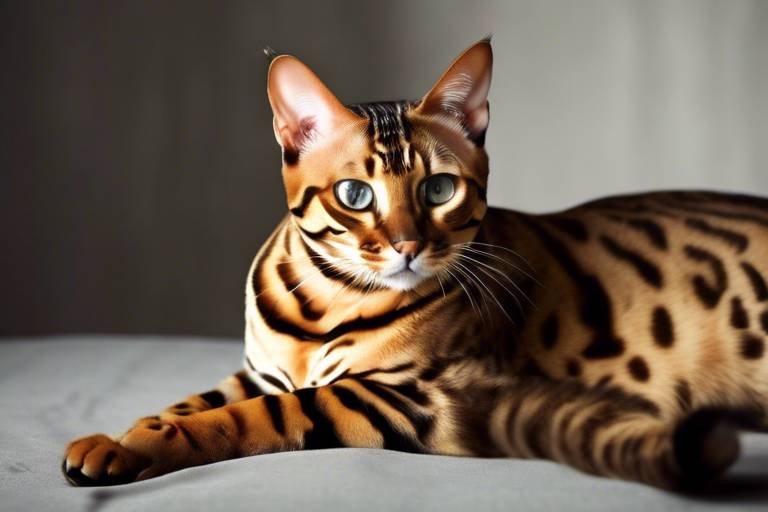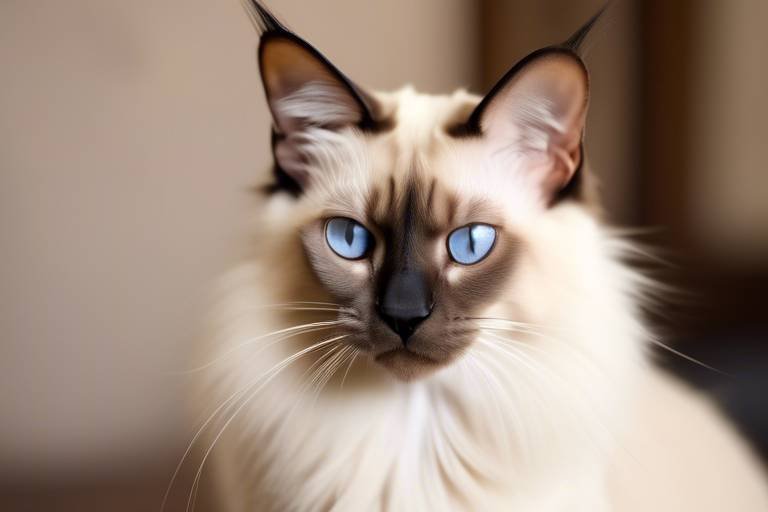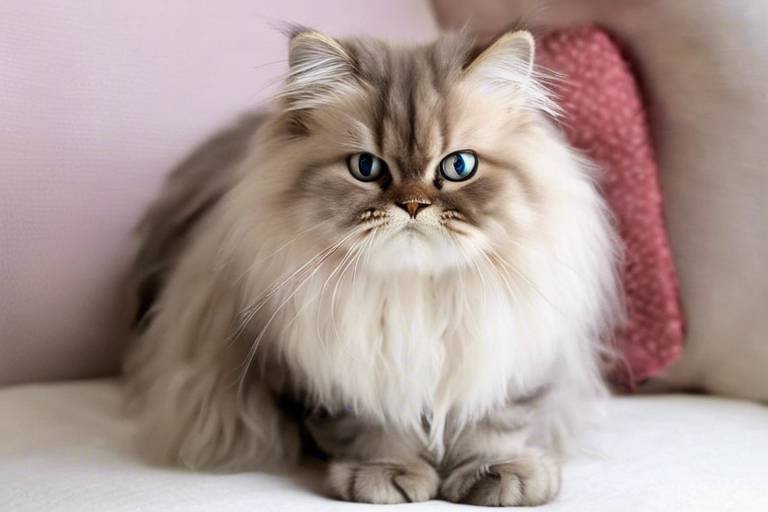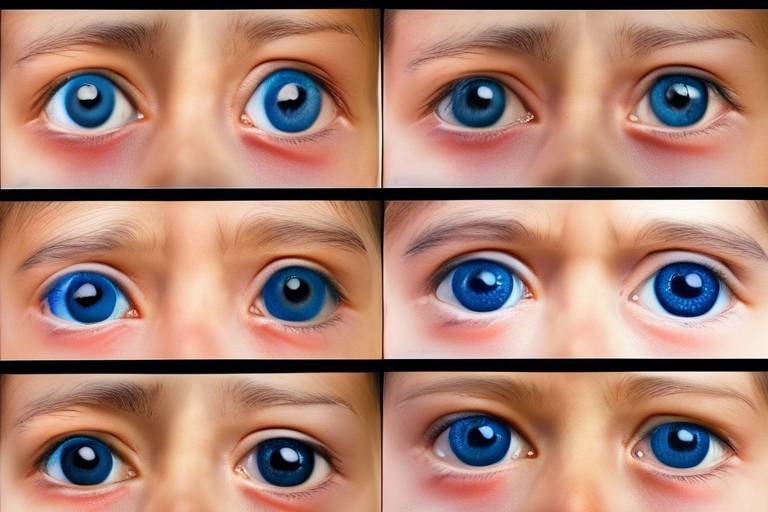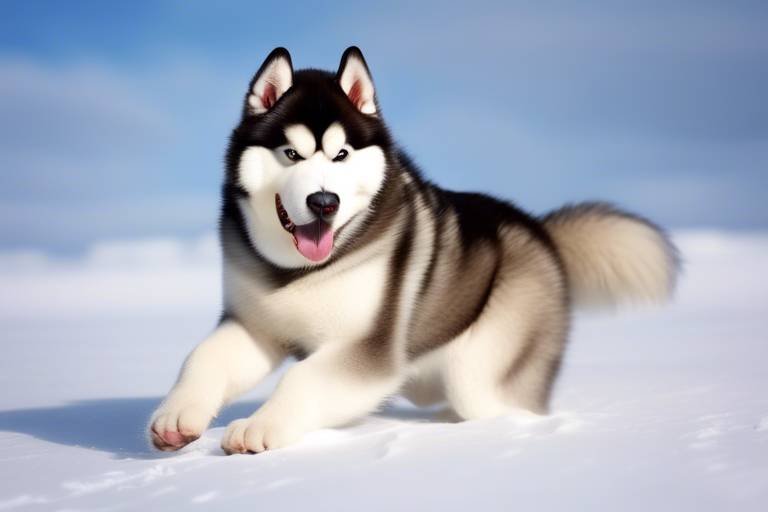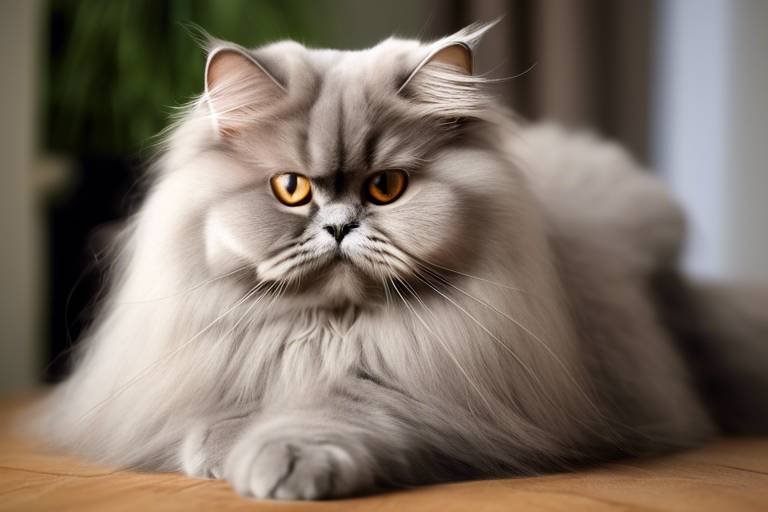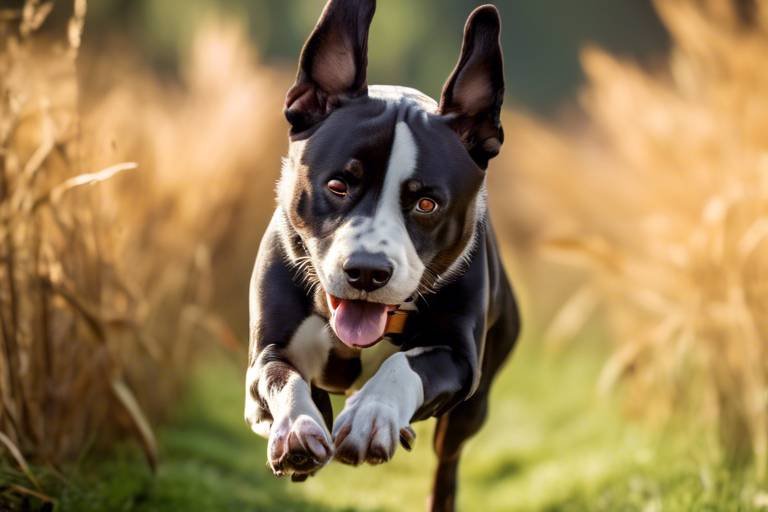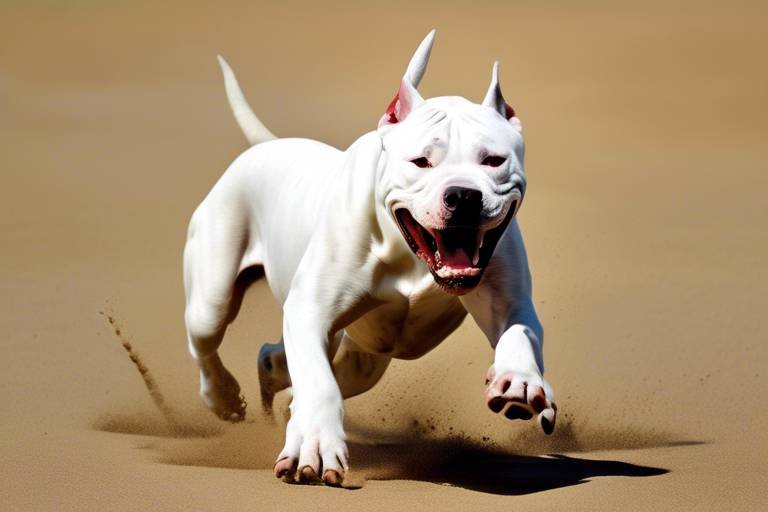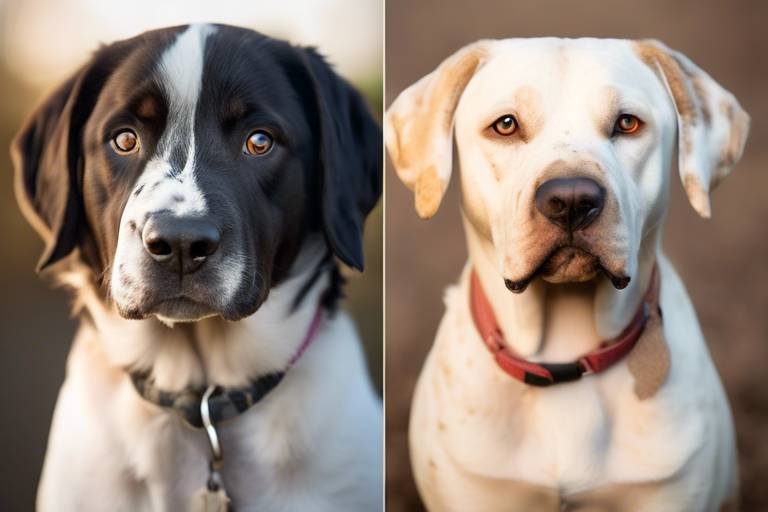The Traits of the Pug - Charming and Playful
Pugs are not just dogs; they are little bundles of joy wrapped in fur! Their unique characteristics make them one of the most beloved companions for families and individuals alike. With their playful nature, affectionate demeanor, and distinct physical traits, pugs have a special way of stealing hearts. Imagine coming home after a long day, and there’s your pug, tail wagging, eyes sparkling with excitement—it's like a warm hug waiting for you at the door! This article dives into what makes pugs so charming and playful, ensuring you understand why they are such cherished pets.
When you think of a pug, the first things that come to mind are their distinctive features. Their wrinkled faces, curled tails, and sturdy bodies are not just for show; they contribute to their undeniable charm. These little guys are compact and muscular, giving them a robust appearance, which is both adorable and sturdy. However, these unique physical traits come with specific care considerations. For instance, their facial wrinkles require regular cleaning to prevent skin infections, and their short snouts can lead to breathing difficulties, especially in hot weather.
A quick glance at the pug’s anatomy reveals why they are so endearing. Here’s a quick table summarizing their physical traits:
| Physical Trait | Description |
|---|---|
| Wrinkled Face | Gives them a unique and expressive look. |
| Curled Tail | A signature trait that adds to their playful appearance. |
| Compact Body | Sturdy and muscular, perfect for their playful antics. |
Pugs are renowned for their friendly and sociable personalities. They are the life of the party, always ready to engage with family members and friends. Their playful nature makes them excellent companions, and their affectionate demeanor ensures they form close bonds with their human families. Have you ever seen a pug greet its owner? It’s like watching a kid on Christmas morning—pure joy! This warmth and enthusiasm are what make them so special.
One of the most delightful traits of pugs is their natural playfulness. These little clowns enjoy games and interactive activities that keep them active and engaged. Whether it's chasing after a ball or playing tug-of-war, pugs bring a sense of joy and laughter to every household. Their enthusiasm for playtime not only keeps them physically fit but also strengthens the bond between them and their owners. It’s like having a little comedian in your home, always ready to entertain!
Pugs delight in various games, but some of their favorites include:
- Fetch: A classic game that never gets old!
- Tug-of-war: A fun way to engage their strength and enjoy some friendly competition.
- Hide and seek: They love using their noses to find hidden treats or toys.
These activities not only provide physical exercise but also mental stimulation, keeping your pug sharp and happy. Remember, a tired pug is a happy pug!
Social interaction is crucial for pugs. They thrive on companionship, often seeking out playdates with other dogs or humans. This sociability enhances their playful nature and contributes significantly to their overall happiness. Picture a pug at the dog park, bounding around with joy—it's a sight that brings smiles to everyone around! Their ability to connect with others makes them not just pets, but beloved family members.
Pugs are renowned for their loving and affectionate behavior. They have an innate desire for companionship, which makes them ideal pets for families and individuals alike. When a pug curls up next to you, it’s like having a warm, furry blanket of love. Their gentle nudges and soft snorts are reminders of their affection, and they often seek out cuddles and attention from their owners. This strong bond is what makes owning a pug an incredibly rewarding experience.
Despite their charming traits, pugs can face health challenges due to their unique physical characteristics. Understanding these issues is essential for ensuring their well-being and longevity. As a responsible pug owner, it's vital to be aware of their potential health risks and take proactive measures to keep them healthy and happy.
Pugs are prone to specific health conditions, such as breathing difficulties and obesity. Their short snouts can lead to respiratory issues, especially in hot or humid weather. Additionally, because of their love for food and treats, they can easily gain weight, which can exacerbate other health problems. Awareness of these issues can help owners take proactive measures to maintain their health. Regular exercise and a balanced diet are key!
Regular veterinary check-ups and a balanced diet are crucial for preventing health problems in pugs. Owners should prioritize their pug's health to enjoy a long and happy life together. This means keeping an eye on their weight, ensuring they get enough exercise, and being vigilant about any changes in behavior or health. Remember, a healthy pug is a happy pug!
Here are some common questions about pugs that many potential owners ask:
- Do pugs shed a lot? Yes, pugs do shed, but regular grooming can help manage it.
- Are pugs good with children? Absolutely! Pugs are generally very friendly and affectionate with kids.
- How much exercise do pugs need? Pugs require moderate exercise, about 30 minutes a day, to stay healthy.
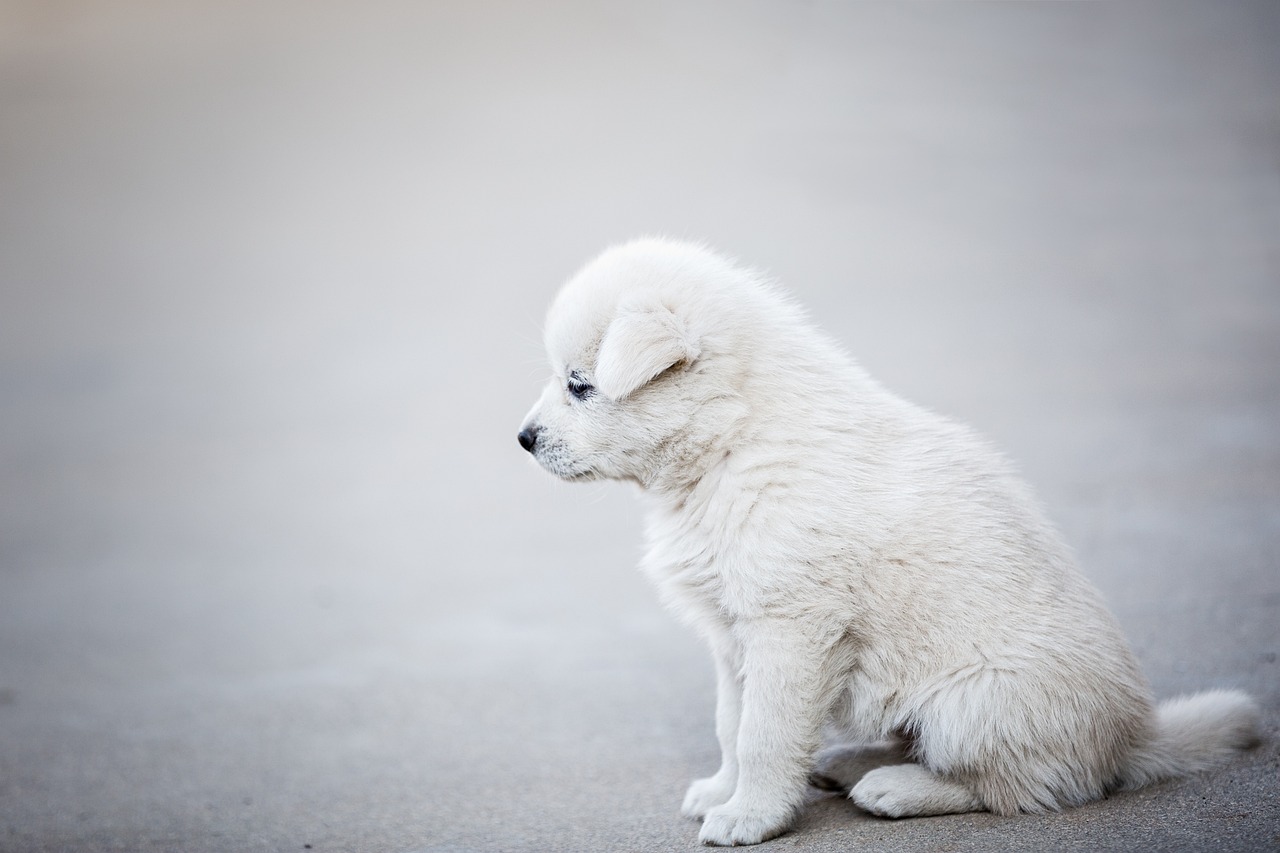
[Physical Characteristics]
Pugs are truly a sight to behold, boasting a unique set of features that make them stand out in the canine world. Their wrinkled faces are perhaps the most recognizable trait, resembling a tiny, adorable crumpled paper that begs to be smoothed out. These charming wrinkles not only add to their character but also require regular cleaning to prevent skin irritations. Imagine a little old man in a dog’s body—those wrinkles tell a story of wisdom and mischief!
Another defining characteristic of pugs is their curled tails. This playful twist at the end of their spine gives them an extra dose of cuteness, almost like a little corkscrew that adds to their playful personality. But it’s not just about looks; those tails are indicators of a pug's mood. A tightly curled tail often signifies a happy and excited pug, while a drooping tail might suggest they’re feeling a bit under the weather. So, keep an eye on that tail; it’s like a mood ring for your furry friend!
In addition to their facial wrinkles and curly tails, pugs possess sturdy bodies that are compact and muscular. They are not overly large dogs, typically weighing between 14 to 18 pounds, making them perfect for both small apartments and spacious homes. Their build allows them to be both agile and strong, often surprising owners with their ability to jump onto the couch or sprint after a toy with unexpected speed. This combination of strength and compactness makes them ideal companions for families and individuals alike.
| Characteristic | Description |
|---|---|
| Wrinkled Face | Unique folds that require regular care to avoid skin issues. |
| Curled Tail | A playful twist that indicates the pug's mood. |
| Sturdy Body | Compact and muscular, weighing between 14 to 18 pounds. |
These physical traits not only contribute to their irresistible charm but also require specific care considerations. For instance, regular grooming is essential to keep their skin healthy and free from irritations. Additionally, pugs are brachycephalic, meaning they have short noses, which can lead to breathing difficulties, especially in hot weather. Therefore, it’s crucial for pug owners to be aware of their environment and to keep their furry companions cool and comfortable.
In conclusion, the physical characteristics of pugs are a delightful blend of charm and practicality. Their unique features make them not just adorable pets but also require a level of care that every owner should be prepared for. So, if you're considering bringing a pug into your home, be ready to embrace their quirks and provide the love and attention they deserve!

[Temperament]
Pugs are renowned for their friendly and sociable personalities. Imagine a little bundle of joy, always eager to greet you with a wagging tail and a goofy grin—this is the essence of a pug! Their playful nature makes them fantastic companions, whether you’re lounging on the couch or going for a brisk walk. They thrive on interaction, not just with their human families but also with other pets. If you’re looking for a dog that can light up your day with their antics, a pug might just be your perfect match.
One of the most delightful aspects of a pug's temperament is their inherent playfulness. These dogs are like tiny comedians, constantly engaging in silly behaviors that will have you laughing out loud. They love to play and are always up for some fun, whether it’s a game of fetch or a spirited round of tug-of-war. Their enthusiasm for playtime not only keeps them active but also strengthens the bond they share with their owners. Just like kids, pugs need that mental and physical stimulation to stay happy and healthy.
Moreover, pugs are incredibly affectionate. They form strong attachments to their owners and often seek out cuddles and companionship. If you’ve ever had a pug snuggle up on your lap or nuzzle against you, you know how heartwarming it can be. Their desire for closeness makes them ideal pets for families and individuals alike. They have a unique way of making you feel special, as if you’re the center of their universe. Just picture them gazing up at you with those big, expressive eyes—how could you resist?
In terms of social interaction, pugs are the life of the party. They love meeting new people and other dogs, often seeking out playdates to enhance their social skills. This sociability not only contributes to their overall happiness but also helps them develop a well-rounded personality. They are often the first to approach guests, eager to make new friends and share their joy. If you enjoy hosting gatherings or have a busy household, a pug will fit right in, bringing laughter and love wherever they go.
To summarize, the temperament of a pug is a delightful mix of playfulness and affection. They are the perfect companions for those who appreciate a lively, loving pet. Whether you're an active individual or someone who prefers a cozy night in, a pug can adapt to your lifestyle and bring endless joy to your life.
- Are pugs good with children? Yes, pugs are generally very good with children and can be playful and gentle companions.
- Do pugs require a lot of exercise? While they enjoy playtime, pugs do not require excessive exercise. Short walks and play sessions are usually sufficient.
- Can pugs be left alone for long periods? Pugs thrive on companionship and may experience separation anxiety if left alone for too long.
- What is the typical lifespan of a pug? Pugs typically live between 12 to 15 years, but with good care, some can live even longer.
[Playfulness]
Pugs are like little bundles of joy, always ready to bring a smile to your face with their playful antics. Their natural zest for life makes them one of the most engaging dog breeds out there. Imagine coming home after a long day, and there’s your pug, tail wagging, eyes sparkling, just waiting to play! This infectious enthusiasm not only keeps them active but also creates a delightful bond between them and their humans. They thrive on interactive play, which is essential for their mental and physical well-being.
One of the most charming aspects of a pug’s playfulness is their knack for turning even the simplest activities into fun games. Whether it’s a game of fetch in the backyard or a spirited tug-of-war with their favorite toy, pugs are always up for the challenge. They have a unique way of engaging with their owners, often using their adorable little faces to convince you to join in on the fun. Their playful nature is not just a trait; it’s a way of life!
When it comes to their favorite games, pugs tend to enjoy a variety of activities. Here are some popular games that keep their spirits high:
- Fetch: Pugs may not be the fastest runners, but they love chasing after a ball or a toy. Their excitement when they retrieve it is simply priceless!
- Tug-of-War: This game is a fantastic way for pugs to show off their strength and determination, and they love the challenge of pulling against their owner.
- Hide and Seek: Pugs enjoy this game as it stimulates their minds. They love searching for their owners or hidden treats around the house.
What's even more fascinating is how pugs interact with other dogs and humans during playtime. Their sociable nature means they often seek out playdates, whether it's at the dog park or a friend's house. They are the life of the party, bringing joy to both dogs and humans alike. This social interaction is crucial for their happiness and well-being, as it not only satisfies their playful instincts but also reinforces their affectionate behavior.
In summary, embracing the playful spirit of a pug can lead to countless joyful moments. Their enthusiasm for games and social interaction not only keeps them physically fit but also strengthens the bond they share with their families. So, if you’re considering adding a pug to your life, be prepared for a whirlwind of fun and laughter!
Q: How much exercise does a pug need?
A: Pugs require moderate exercise, typically about 30 minutes a day. This can include walks, playtime, and interactive games to keep them healthy and happy.
Q: Are pugs good with children?
A: Yes! Pugs are known for their friendly and gentle temperament, making them great companions for children. They usually enjoy playing and interacting with kids.
Q: Do pugs like to play alone?
A: While pugs can entertain themselves, they thrive on social interaction. They love playing with their owners and other pets, so it's best to engage them in playtime.
Q: What are some signs that my pug is bored?
A: If your pug is chewing on furniture, barking excessively, or seems lethargic, these can be signs of boredom. Regular play and stimulation are essential to keep them engaged.
[Favorite Games]
Pugs are not just adorable companions; they are also playful little dynamos that thrive on engaging activities. When it comes to their favorite games, these charming dogs have a few that truly light up their eyes and get their tails wagging. One of the most beloved games among pugs is fetch. You might think it’s a simple game, but for a pug, it’s an exhilarating adventure. The moment you throw a toy, their tiny legs go into overdrive, showcasing a burst of energy that’s both surprising and delightful. Watching a pug dash after a ball, only to return it with a proud look on their face, is a joy that never gets old.
Another favorite is tug-of-war. This game is perfect for pugs, as it not only stimulates their minds but also gives them a chance to show off their strength (which, let’s be honest, is pretty impressive for such a small breed). Engaging in a friendly tug-of-war session can also enhance the bond between you and your pug, making it a win-win situation. Just remember, it’s all in good fun! You wouldn’t want to pull too hard and hurt their little teeth.
Moreover, pugs are incredibly social creatures, and they absolutely adore playdates. They thrive on interaction, so inviting over a friend’s dog can turn an ordinary day into a playful escapade. During these playdates, pugs engage in a variety of games, including chasing each other around the yard or even joining in on a game of tag. Their playful antics can be a source of endless entertainment, not just for them but for everyone watching.
To keep things interesting, you might want to introduce some interactive toys into the mix. Puzzle toys that dispense treats are fantastic for keeping their minds sharp while providing a rewarding experience. Pugs love the challenge of figuring out how to get to that tasty treat hidden inside! This not only keeps them entertained but also helps prevent boredom, which can often lead to unwanted behaviors.
In summary, whether it’s chasing after a ball, engaging in a tug-of-war, or enjoying a playdate with fellow furry friends, pugs are all about fun and games. Their playful spirit is infectious, and as a pug owner, you’ll find that these games are not just activities; they’re opportunities to create lasting memories filled with laughter and joy. So grab that toy, invite a friend over, and let the games begin!
- What are the best toys for pugs?
Look for soft toys, interactive puzzle toys, and chew toys that are safe for their small mouths. - How much exercise do pugs need?
Pugs require moderate exercise, typically around 30 minutes a day, which can include walks and playtime. - Can pugs play with larger dogs?
Yes, but supervision is essential to ensure that the play remains safe and enjoyable for both dogs. - Are pugs good with children?
Absolutely! Pugs are known for their friendly disposition and often get along well with kids.
[Social Interaction]
Pugs are social butterflies in the canine world, and their need for interaction is as strong as their love for treats. Imagine a little ball of fur, with a wrinkled face and a curly tail, bounding towards you with pure joy. That’s a pug for you! These dogs thrive on companionship, and it’s not just about being around their human family — they also enjoy the company of other dogs. Playdates are practically a pug's dream come true! They have an innate ability to make friends, whether it's with a fellow pug or a Great Dane; they don’t discriminate when it comes to playmates.
When it comes to social interaction, pugs are like that friend who always knows how to lighten the mood. They love to engage in playful antics that can make anyone smile. Their playful nature means they are always up for a game of chase or a cozy cuddle session on the couch. It's this blend of energy and affection that makes them such fantastic companions. They often seek out opportunities to socialize, whether at the dog park, during walks, or even at home with visiting friends and family. A pug's enthusiasm for social interaction can be contagious, making it hard for anyone to resist joining in on the fun.
Moreover, pugs are incredibly intuitive. They can sense when you're feeling down and will often snuggle up beside you, offering warmth and comfort. This emotional intelligence enhances their social interactions, as they not only seek companionship but also provide it in abundance. It's like having a little therapist with a wagging tail and a penchant for mischief! Their friendly demeanor makes them excellent candidates for therapy dogs, as they bring joy and comfort to those around them.
In summary, if you’re considering adding a pug to your family, be prepared for a dog that craves social interaction. They thrive on being part of a pack, and their playful spirit and affectionate nature will undoubtedly enrich your life. Just remember, a happy pug is one that has plenty of opportunities to socialize and play!
- How often should I socialize my pug? Regular socialization is key! Aim for at least a few playdates or outings each week to keep your pug happy and engaged.
- Can pugs get along with other pets? Yes! Pugs are generally friendly and can adapt well to living with other pets, especially with proper introductions and socialization.
- What are the best activities to do with a pug? Engage them in interactive games like fetch, tug-of-war, or even simple walks around the neighborhood to satisfy their social needs.
- How can I tell if my pug is bored? A bored pug might become destructive or overly clingy. If they seem restless, it’s time for some playtime or a new activity!
[Affectionate Nature]
This article explores the unique characteristics that make pugs beloved companions, highlighting their playful nature, affectionate demeanor, and distinct physical traits that contribute to their charm.
Pugs are known for their distinctive features, including their wrinkled faces, curled tails, and sturdy bodies. These traits not only add to their charm but also require specific care considerations.
Pugs are renowned for their friendly and sociable personalities. Their playful nature makes them great companions, while their affectionate demeanor ensures they bond closely with their human families.
Pugs are naturally playful dogs, enjoying games and interactive activities. Their enthusiasm for playtime keeps them active and engaged, fostering strong relationships with their owners and other pets.
Pugs delight in games like fetch and tug-of-war, which stimulate their minds and bodies. These activities help maintain their physical health and provide mental stimulation.
Pugs thrive on social interaction, often seeking out playdates with other dogs or humans. This sociability enhances their playful nature and contributes to their overall happiness.
Pugs are known for their loving and affectionate behavior, often forming strong bonds with their owners. Their desire for companionship makes them ideal pets for families and individuals alike. Imagine coming home after a long day; the moment you step through the door, your pug is there, wagging its little tail and showering you with kisses. This warm welcome is just one example of how pugs express their love.
They are like furry little shadows, following you from room to room, always eager to be by your side. This affectionate nature is not just about physical closeness; it’s about emotional connection. Pugs have an innate ability to sense your mood, offering comfort when you're feeling down and celebrating with you during joyful moments. Their expressive eyes and gentle snorts can melt even the toughest of hearts.
Moreover, pugs thrive on attention and affection from their owners. They often engage in behaviors that encourage bonding, such as:
- Cuddling: Pugs love to snuggle, making them perfect lap dogs.
- Playful antics: Their silly, playful behaviors can bring laughter and joy to any household.
- Affectionate nudges: They often nudge you with their noses, a clear sign that they want some love and attention.
This affectionate demeanor is one of the defining traits of a pug, making them not just pets but beloved family members. Their loyalty is unwavering, and they often become the heart of the home, providing companionship and joy.
Despite their charming traits, pugs can face health challenges due to their unique physical characteristics. Understanding these issues is essential for ensuring their well-being and longevity.
Pugs are prone to specific health conditions, such as breathing difficulties and obesity. Awareness of these issues can help owners take proactive measures to maintain their health.
Regular veterinary check-ups and a balanced diet are crucial for preventing health problems in pugs. Owners should prioritize their pug's health to enjoy a long and happy life together.
Yes, pugs are generally good with children. Their playful and affectionate nature makes them great companions for kids.
Pugs require moderate exercise, such as daily walks and playtime, to stay healthy and happy.
Yes, pugs do shed, but regular grooming can help manage their coat and reduce shedding.
Yes, due to their unique physical characteristics, pugs are prone to certain health issues like breathing problems and obesity.
Regular vet check-ups, a balanced diet, and sufficient exercise are key to maintaining your pug's health.
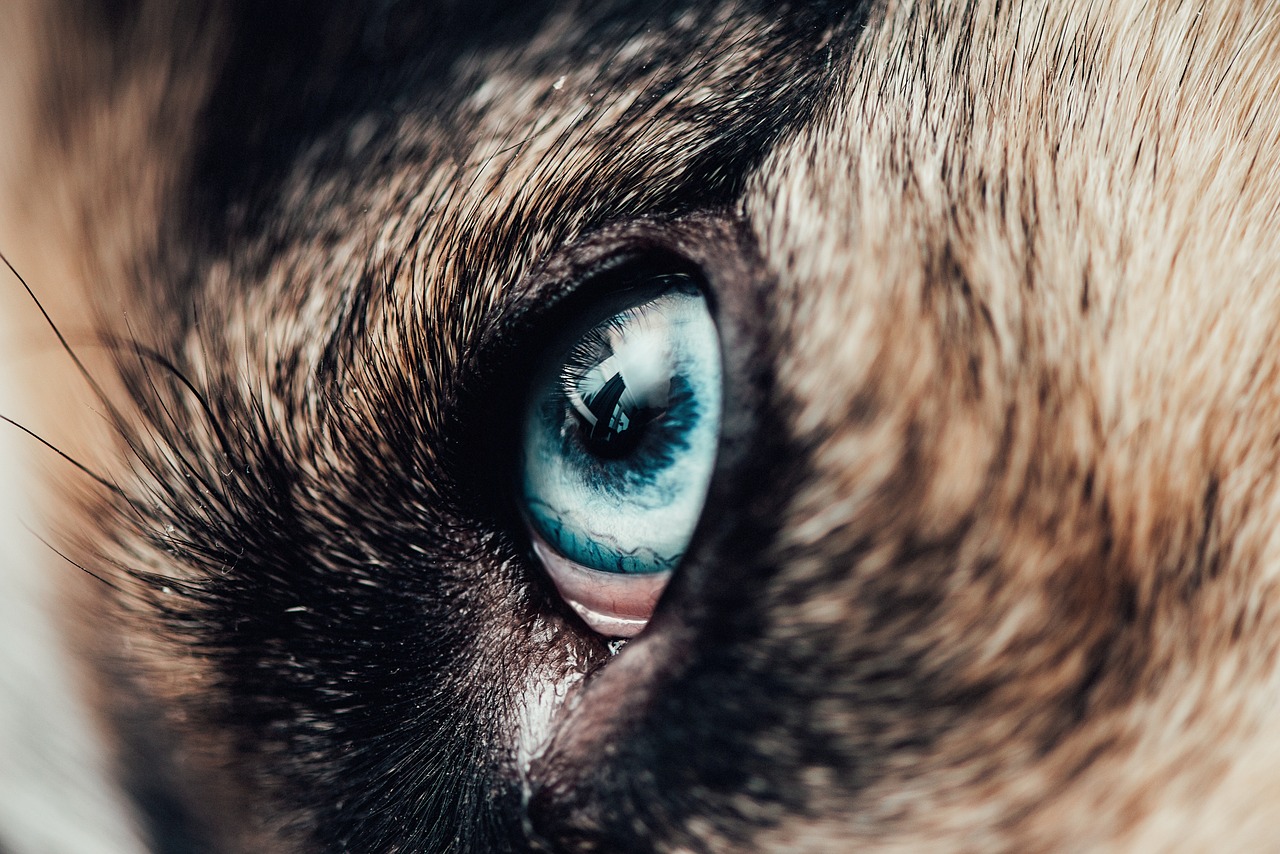
[Health Considerations]
Pugs, with their adorable faces and charming personalities, are not just delightful companions; they also come with a set of health considerations that every owner should be aware of. While their playful antics and affectionate nature make them a joy to have around, their unique physical traits can lead to specific health challenges that require attention. Understanding these challenges is crucial for ensuring a long and healthy life for your pug.
One of the most significant health issues faced by pugs is related to their breathing difficulties. Due to their short snouts, pugs are brachycephalic, which means they have a higher risk of respiratory problems. This can manifest in various ways, such as snoring, wheezing, or even struggling to breathe during exercise or in hot weather. Owners should be vigilant about their pug's breathing patterns and seek veterinary advice if any abnormalities are noticed.
In addition to respiratory issues, pugs are also prone to obesity. Their love for food and tendency to beg can lead to overeating if not monitored closely. Obesity can exacerbate other health problems, including joint issues and heart disease. Therefore, it’s essential to maintain a balanced diet and engage in regular exercise to keep your pug at a healthy weight. A well-structured feeding schedule and portion control can make a significant difference in preventing obesity.
To help pug owners navigate these health considerations, here are some common health issues to be aware of:
- Breathing difficulties
- Obesity
- Eye problems, such as corneal ulcers
- Skin conditions due to their folds
- Hip dysplasia
Preventive care is key to managing these health issues effectively. Regular veterinary check-ups are essential, as they can help catch potential problems early. During these visits, your vet can monitor your pug's weight, assess their breathing, and check for any signs of discomfort or distress. Additionally, keeping up with vaccinations and parasite control is vital for your pug's overall health.
A balanced diet specifically formulated for pugs is also crucial. Look for high-quality dog food that meets their nutritional needs. You might also consider consulting with your veterinarian about the best diet plan tailored to your pug's age, weight, and activity level. Remember, treats are fine in moderation, but they should never replace a well-balanced meal.
Moreover, engaging your pug in regular physical activity is not just beneficial for their weight management; it also promotes mental stimulation and emotional well-being. Activities like short walks, play sessions, and interactive games can keep your pug active and happy, helping to prevent obesity and related health issues.
In summary, while pugs are incredibly charming and loving companions, they do come with health considerations that require attention. By being proactive about their health, maintaining a balanced diet, and ensuring regular vet visits, you can provide your pug with a long, happy, and healthy life.
Q: How often should I take my pug to the vet?
A: It's recommended to take your pug for a veterinary check-up at least once a year. However, if your pug shows any signs of distress or unusual behavior, don't hesitate to schedule an appointment sooner.
Q: What should I feed my pug?
A: Look for high-quality dog food that is specifically formulated for small breeds. Consult with your veterinarian to determine the best diet for your pug based on their individual needs.
Q: How can I prevent my pug from becoming overweight?
A: Regular exercise, portion control, and a balanced diet are key. Engage your pug in daily activities and avoid giving them too many treats.
Q: What are the signs of breathing difficulties in pugs?
A: Signs include snoring, wheezing, excessive panting, or difficulty breathing during exercise. If you notice any of these symptoms, consult your veterinarian.
[Common Health Issues]
Pugs, with their adorable wrinkled faces and compact bodies, are undeniably charming, but it's essential to recognize that their unique physical traits can lead to specific health challenges. One of the most prominent issues faced by pugs is brachycephalic obstructive airway syndrome (BOAS). This condition arises from their short snouts, which can cause breathing difficulties, especially during hot weather or vigorous exercise. Imagine trying to breathe through a straw—this is what many pugs experience, making it crucial for owners to monitor their breathing and avoid overexertion.
Another common health concern is obesity. Pugs have a tendency to gain weight quickly, which can exacerbate their breathing problems and lead to other health issues such as diabetes and joint problems. Owners should be vigilant about their pug's diet and ensure they get regular exercise. Just like us, pugs benefit from a balanced diet that includes the right mix of proteins, carbohydrates, and fats. A good rule of thumb is to consult with a veterinarian to determine the ideal weight and caloric intake for your pug.
Additionally, pugs are prone to skin issues due to their folds and wrinkles. These areas can trap moisture and dirt, leading to infections if not cleaned properly. It's essential to regularly check and clean your pug's facial folds to prevent any buildup that could result in irritation or infection. Think of it as maintaining a beautiful garden; regular care ensures that everything stays healthy and vibrant.
Lastly, pugs can also suffer from hip dysplasia and other joint problems, especially as they age. This condition occurs when the hip joint doesn't fit snugly into the hip socket, leading to arthritis over time. Regular vet check-ups, combined with appropriate exercise and weight management, can help mitigate these issues.
In summary, while pugs are delightful companions, being aware of their potential health issues is vital for their well-being. By understanding these challenges and taking proactive measures, pug owners can ensure their furry friends lead happy, healthy lives. Remember, a little prevention goes a long way, so keep an eye on those adorable pups!
- What are the signs that my pug might have breathing issues? Look out for excessive panting, snoring, or difficulty breathing during play or walks.
- How can I prevent my pug from becoming overweight? Maintain a balanced diet and ensure regular exercise; consult your vet for personalized recommendations.
- What should I do if I notice skin irritation in my pug? Clean the affected area gently and consult your vet if the irritation persists or worsens.
- How often should I take my pug to the vet? Regular check-ups at least once a year are recommended, or more frequently if your pug has existing health issues.
[Preventive Care]
When it comes to ensuring your pug lives a long, happy life, preventive care is key. Just like we humans need regular check-ups and a balanced diet to stay healthy, our furry friends require the same level of attention. Pugs, with their adorable wrinkled faces and playful spirits, can face a few health challenges that need proactive measures from their owners. One of the best ways to keep your pug in tip-top shape is through consistent veterinary visits. These check-ups allow your vet to monitor your pug's health, catch any potential issues early, and provide vaccinations that can ward off diseases.
In addition to regular vet visits, a balanced diet is crucial. Pugs are known to love their food, and their adorable faces can be hard to resist when they beg for treats. However, it's essential to maintain a diet that is both nutritious and appropriate for their size. Overfeeding can lead to obesity, which is a common issue among pugs. To help you understand the right dietary choices, consider the following table:
| Food Type | Benefits | Recommended Portion |
|---|---|---|
| High-Quality Dry Dog Food | Provides essential nutrients and helps maintain a healthy weight | 1 - 1.5 cups per day, divided into two meals |
| Fresh Vegetables | Low in calories and high in fiber, great for snacks | Small amounts, 1/4 cup as a treat |
| Lean Proteins (like chicken or fish) | Supports muscle health and energy levels | 1/4 cup mixed in with dry food occasionally |
Moreover, regular exercise is vital for pugs. While they may enjoy lounging around, they also need to get their little legs moving. Short walks and interactive playtime can help keep their weight in check and their hearts healthy. Remember, a tired pug is a happy pug! It's also important to be mindful of the weather; pugs can struggle with extreme heat or cold due to their brachycephalic (flat-faced) structure. Always ensure they have access to fresh water and a cool place to rest during hot days.
Lastly, dental hygiene is often overlooked but is an essential part of preventive care. Pugs can be prone to dental issues, so regular brushing and dental treats can help maintain their oral health. Consider scheduling professional cleanings with your vet to keep their pearly whites in top condition. By taking these preventive measures seriously, you can significantly enhance your pug's quality of life and longevity.
- How often should I take my pug to the vet? - It's recommended to have annual check-ups, but more frequent visits may be necessary for older pugs or those with health issues.
- What should I feed my pug? - A balanced diet consisting of high-quality dog food, fresh vegetables, and lean proteins is ideal.
- How much exercise does my pug need? - Aim for at least 30 minutes of exercise each day, divided into short walks and play sessions.
- Are there specific dental care products for pugs? - Yes, there are dental chews and toothpaste specifically designed for dogs that can help maintain their oral hygiene.
Frequently Asked Questions
- What are the key physical traits of a pug?
Pugs are easily recognizable due to their wrinkled faces, curled tails, and sturdy bodies. These unique characteristics not only contribute to their charm but also require specific care, such as regular cleaning of their facial folds to prevent skin issues.
- How playful are pugs?
Pugs are naturally playful dogs! They love engaging in games like fetch and tug-of-war. Their enthusiasm for playtime keeps them active and helps strengthen the bond with their owners. Plus, it’s a great way to keep them mentally stimulated!
- Are pugs good with children and other pets?
Absolutely! Pugs are known for their friendly and sociable personalities, making them excellent companions for children and other animals. They thrive on social interaction and often seek out playdates, which enhances their playful nature.
- What health issues should I be aware of with pugs?
Pugs can face specific health challenges, including breathing difficulties and obesity. Their unique physical characteristics make them prone to these issues, so being aware of them is crucial for their well-being.
- How can I keep my pug healthy?
Regular veterinary check-ups and a balanced diet are vital for maintaining your pug's health. Owners should prioritize preventive care to help their pugs live long, happy lives. Staying active with playtime is also essential to avoid obesity!
- Do pugs require a lot of grooming?
Pugs have a short coat that requires minimal grooming. However, it’s important to keep their facial wrinkles clean and dry to prevent skin infections. Regular brushing can help reduce shedding and keep their coat healthy.
- What is the ideal living environment for a pug?
Pugs adapt well to various living situations, whether in an apartment or a house. They do best in environments where they can receive plenty of love and attention. Remember, they thrive on companionship!

